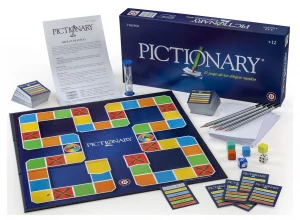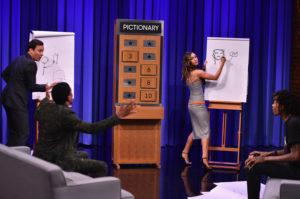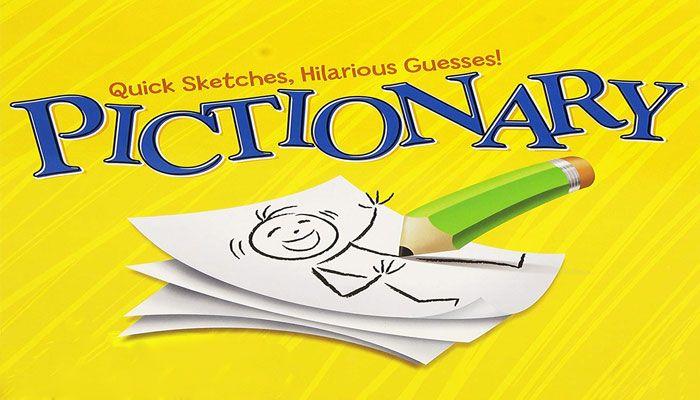Introduction:
Pictionary is a word-guessing drawing game taking inspiration from charades. It was created by Robert Angel and is usually played in a board game format.
Target Audience:
Pictionary is great for families and groups of friends who enjoy friendly competition, working in a team, and improvisation.
Formal Elements:
Both Objectives and Outcomes make up important formal elements of Pictionary. The objective of the game is to advance your team’s board piece to reach the end of the board first. To make movements towards this goal, your team must guess a secret word based on a picture a teammate is drawing before the time limit is up. This is repeated with new words and team members each time until your team fails to make a correct guess in time. This ends your team’s turn and begins the next team’s turn. The game is zero-sum as only one team can win at the end of the game.
Rules are also important in this game. Similarly to charades, the player trying to communicate the secret word cannot do so by any means other than drawing. They may not speak to their teammates, use sign language, draw letters or numbers, draw dashes to show the number of letters, or draw “ears” to mean “sounds like.” These are all forbidden actions that must be avoided as part of the game’s Objective.
Procedures are similarly notable here. One team plays at a time. One player from that team draws a card telling them what secret word to draw based on the color of the square their team’s board piece is currently on. This player, the “Picturist,” then sketches clues for their team to guess off of until they guess correctly or time runs out. If the team guesses correctly, they continue playing by rolling the die and advancing their board piece correspondingly across the board; they then pick a new Picturist and repeat the previous procedures until they eventually fail to guess a word on time. This will pass their turn on to the next team. If a team is on an “All-Play” square, all teams have a Picturist draw for the same word and whichever guesses correctly first gets to continue the turn. “Wild-Squares” allow for the Picturist to pick any category on their card for a word to draw.

Types of Fun:
The types of fun in Pictionary are Challenge and Fellowship. The challenge comes in how difficult is to communicate the secret word between teammates successfully with such limited means as drawing. The fellowship comes in how this is a very light-hearted team game that revolves around communication and understanding your teammates, which is often aided by and can even contribute to bonds with them.

Moment of Success/Failure:
Despite a minute’s worth of time and about 5 different attempts, I could not communicate to my team the image of a lamp.
Thing to Change:
I would like it if the game had more complex or pop culture-relevant words. It would help the game feel more engaging and relevant. Maybe finding a way to create “combo” or “modified” prompts could also help to increase complexity and hopefully hilarity, like having someone draw a “bucket on top of an elephant,” for example. I imagine they could have their own square type and they could work like the combo prompt cards in Cards Against Humanity and would just depict a simple connection between two words such as “____ chewing on____” or just add an adjective before a word like “sparkly ____.”



